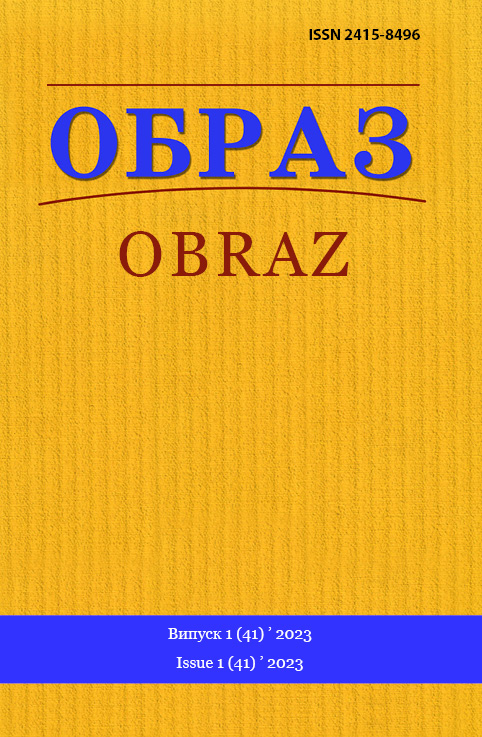Abstract
This study analyzes the visual, content, and digital diversity in newspapers for children in the Scandinavian region, focusing on Aftenposten Junior (Norway), SvD Junior (Sweden), and Postimees Juunior (Estonia). Our findings show that all three newspapers demonstrate a commitment to diversity in their content and visuals, but their approaches vary. Aftenposten Junior focuses on environmental and political issues, while SvD Junior emphasizes cultural diversity and social justice. Postimees Juunior has a stronger focus on children’s interests and activities. The study highlights the importance of diversity in newspapers for children and provides insights for publishers and editors to engage young readers through relevant content and visuals.
References
1. Aftenposten Junior (2023), available at: https://www.aftenposten.no /aftenpostenjunior/ (accessed January 10, 2023).
2. SvD Junior (2023), available at: https://www.svd.se/junior (accessed January 10, 2023).
3. Postimees Juunior (2023), available at: https://juunior.postimees.ee/ (accessed January 10, 2023).
4. Montgomery, K. C. (2000), “Children’s media culture in the new millennium: Mapping the digital landscape”, The Future of Children, vol. 10, no. 2, pp. 145–167.
5. Kramp, L. (2017), “We need to keep moving: Strategies of news media to attract young audiences in Germany”, in Tosoni S, et al. (Eds.), Present Scenarios of Media Production and Engagament, Bremen: Edition Lumière, pp. 107–122.
6. Gjerver, M. (2017), Barnas nyhetsbilde. En innholdsanalyse av NRK Supernytt og Aftenposten Junior, Master’s thesis, University of Oslo, Norway, 124 p.
7. Hobbs, R., Cohn-Geltner, H., & Landis, J. (2011), “Views on the news”, in Cecilia von Feilitzen, Ulla Carlsson and Catharina Buch, (Eds.), New questions, new insights, new approaches, Gothenburg: The International Clearinghouse on Children, Youth and Media/Nordicom, pp. 43–56.
8. Carter, C. (2013), “Children and the news: Rethinking citizenship in the 21st century”, in Lemish D. (Eds.), The Routledge international handbook of children, adolescents and media, Oxon: Routledge, pp. 255–262.
9. Matthews, J. (2009a), “Making It Our Own BBC Newsround Professionals and Their Efforts to Build a News Agenda for the Young”, Television & New Media, vol. 10, no. 6, pp. 546–563.
10. Matthews, J. (2009b), “Negotiating news childhoods: News producers, visualised audiences and the production of the children’s news agenda”, Journal of children and media, vol. 3, no.1, pp. 2–18.
11. Magnesen, K. R. (2016), Barn og nyheter, norske barns nyhetsleting og-forståelse, Master’s thesis, University of Oslo, Norway, 107 p.
12. Lättläst & för barn (2022), ”Mediekompass”, available at: https://mediekompass.se/lattlastoch-for-barn/ (accessed January 10, 2023).
13. Postimees Juunior (2019), “Turule jõuab lastele ja noortele suunatud nädalaleht” (2019), available at: https://cutt.ly/V3Om8zF (accessed January 11, 2023).
14. Martens, H., & Hobbs, R. (2015), “How media literacy supports civic engagement in a digital age”, Atlantic Journal of Communication, vol. 23, no. 2, pp. 120–137.
15. Hobbs, R. (2006), “Multiple visions of multimedia literacy: Emerging areas of synthesis”, International handbook of literacy and technology, vol. 2, pp. 15–28.
16. Raeymaeckers, K. (2004), “Newspaper editors in search of young readers: Content and layout strategies to win new readers”, Journalism studies, vol. 5, no. 2, pp. 221–232.
17. Graybeal, G. M. (2011), “Newspapers publish less in print; focus on Web to attract young readers”, Newspaper Research Journal, vol. 32, no. 1, pp. 90–97.
18. Miller, V. (2008), “New media, networking and phatic culture”, Convergence, vol. 14, no. 4, pp. 387–400.
19. Liestøl, E. (Ed.) (2016), Barn & medier, 9-16-åringers bruk og opplevelser av medier, Fredrikstad: Medietilsynet, Fredrikstad, 88 p.
20. Aamli, K. (2018), ”Barnebøker om 22. Juli bruker sterke virkemidler”, available at: https://cutt. ly/03OUwsD (accessed January 21, 2023).
21. Aftenposten Junior (2022), “DOGA”, available at: https://doga.no/en/tools/inclusive-design/ cases/aftenposten-junior/ (accessed January 12, 2023).
22. Midtstigen M. (2020), “Tough news gets translated for young readers. Schibsted”, Future report, pp. 13-15, available at: https://cutt.ly/33PgKlm (accessed January 15, 2023).
23. Aftenposten Junior (2020), “Aftenposten Junior skole”, available at: https://juniorskole.no/ (accessed January 15, 2023).
24. SvD (2022), ”Sveriges kvalitetssajt för nyheter”, available at: https://www.svd.se/ (accessed January 15, 2023).
25. Statista (2019), “Sweden: Children reading online daily newspapers by gender 2019”, available at: https://cutt.ly/h3Phqbq (accessed January 15, 2023).
26. Barn i stan (2021), ”Kunskap varje vecka – en perfekt julklapp till barn eller barnbarnet i Stockholm – Barn i stan”, available at: https://www.barnistan.se/svd-junior/ (accessed January 15, 2023).
27. Mediekompass (2022), ”Premiär för SvD Junior Skola”, available at: https://mediekompass.se/ nyheter/premiar-for-svd-ju nior-skola/ (accessed January 15, 2023).
28. Junior Skola (2022), available at: https://www.juniorskola.se/ (accessed February 1, 2023).
29. Hobbs, R. (2017), “Measuring the digital and media literacy competencies of children and teens”, In F.C Blumberg & P. J. Brooks (Eds.), Cognitive development in digital contexts, Academic Press, pp. 253-274.
30. Jukes, I., & Dosaj, A. (2006), “Understanding digital children (DKs)”, Understanding Digital Kids: Teaching & Learning in the New Digital Landscape, The InfoSavvy Group.
31. Kütt, K. (2022), “NOOR KIRJANIK. Reijo Roos annab nõu, kuidas teha oma raamat” (A YOUNG WRITER. Reijo Roos gives advice on how to make your own book), available at: https://juunior.postimees.ee/7526551/noor-kirjanik-reijo-roos-annab-nou-kuidas-teha-oma-raamat (accessed February 3, 2023).
32. PM Haridusportaal (2022), “Gümnasistid käisid matkal fossiile uurimas ning kivimite radioaktiivsust mõõtmas” (High school students went on a hike to study fossils and measure radioactivity in rocks), available at: https://cutt.ly/u3PhoPP (accessed February 1, 2023).

This work is licensed under a Creative Commons Attribution 4.0 International License.

